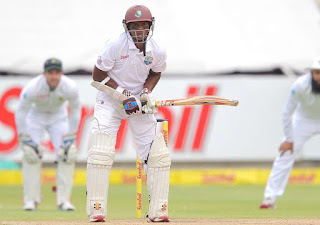8 Football Lingos You Ought To Know
It doesn’t matter if you watch a live football
or play
fantasy football, which is basically a side-kick of the real game, here
are some football jargons that you might or might not know
1.
Tiki-Taka
Tiki-taka in
football translates as ‘touch-touch’ football. This involves short passing and
movement, maintaining possession and working the ball through the
channels. The
key idea behind tiki-taka is
to ensure that the opponent does not get the ball – and while in possession, to
deliver a killer pass from which a goal can be scored. The team looks to keep
possession with quick passes and movement, suddenly surprising the
opposition with a pass in behind their defence which results in a goal. Football
coach Jed C. Davies, author of Coaching
the tiki-taka style of play, believes that these tactics are “among
other things, a conceptual revolution based on the idea that the size of any
football field is flexible and can be altered by the team playing on it.”
2. Roulette (The Marseille Turn)
The Roulette or the Marseille Turn is a type of dribbling skill which basically involves a spin move around the ball. It can be done when the player is stationary or moving with the ball. It involves dragging the ball back to his main foot, doing a body spin (360 degrees) and getting the ball back to the weaker foot. Michael Laudrup is often credited for being the first player to use this technique, and since then many notable footballers like Diego Maradona, Zinedine Zidane, Thierry Henry, Lionel Messi and Kaka have successfully executed the Marseille Turn.
3. Elastico
The Elastico or
the flip-flap is a dribbling move which a player uses to deceive the defender
into thinking that he will go in a particular direction while actually going to
the other direction. The player does the trick by using the outside of one foot
to push the ball to a side, and then quickly move that foot around the ball and
use the inside of the foot to push the ball to the other side.The trick
requires nifty footwork and ability of the player to accelerate quickly from a
stationary position. Japanese Brazilian player Sergio Echigo invented this move
4. The Cruyff Turn
The Cruyff Turn is an evasive
move taken when the player who is being marked by a defender, while looking to
pass or cross the ball, instead of kicking it would drag the ball with a foot
to the back of the other foot, rotate 180 degrees and run away from the
defender. The move was famously executed by Cruyff in the 1974 World Cup when
he outwitted Sweden’s Jan Olsson. The move is now commonly used by many players
worldwide.
5. Rabona
Rabona is a move which involves
kicking the ball where the kicking leg is wrapped from behind the standing
leg. In other words, the player is kicking the ball with his legs being
crossed. A rabona is used by a player when he feels that ball is on his weaker
foot. Another scenario when a player performs a rabona is when he is trying to
confuse the defender. Some of the leading current players who have executed the
rabona successfully include Cristiano Ronaldo, Luis Suarez and Angel di Maria.
6. Regista
Regista means
“Director” in Italian and the player literally directs and dictates the play of the team.
Regista or the deep-lying playmaker (or
quarterback, as the position is often referred to) is a player who stays deep
and controls the game from there. A regista isn’t expected to
be supremely quick and have to run around the pitch trying to win the ball.
Instead, he is required to have the intelligence to be able to read the game
and identify where his teammates and opponents are and will be and be able
to deliver the required pass to set up an offensive play. In present day
football no player performs this job as exquisitely and perfectly as
Italy’s Andrea Pirlo. Pirlo played a key role in Italy winning the 2006
World Cup and controlled the game for his side from the deep midfield
position. He continued to thrive in the role for Juventus and Italy and the
opposition teams were forced to plan ways to neutralise Pirlo’s impact in the
game.
7. Forward Destroyer
With the advent of the registas, teams began to ponder
over how to neutralise the
impact of playmakers. With the regista staying
deep in his half, the only player who can look to nullify his influence is an
advanced midfielder in the number 10 position. With this in mind, managers have
started playing defensive
midfielders in an advanced role called the forward destroyer. Marouane
Fellaini is probably the best example of a forward destroyer as he built
his reputation at Everton where David Moyes played him in that role. A more
recent use of the forward destroyer was during the 2014 World Cup when Roy
Hodgson played Danny Welbeck in the position in an attempt to reduce Pirlo’s
impact on the game.
8. Total Football
Total football involves players constantly switching positions
in an attempt to confuse the opponents and the strategy requires players
to be very versatile. There is focus on ball retention and, while
possession is maintained, some players try to move around and get into goal scoring
positions. The tactics find their origin in Netherlands and were first used
at the Dutch club Ajax in 1915. Later in the century, Rinus Michels popularised
the tactics when he took over as manager of Ajax and brought it to prominence
with the Dutch national team in the 1974 World Cup.



Comments
Post a Comment